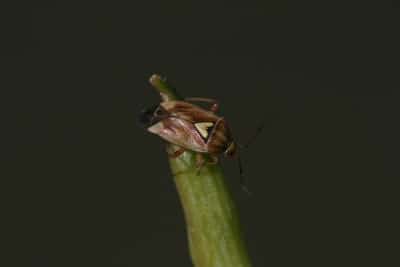
Lygus bugs are still at high numbers in some regions, mostly in Alberta. If sweep netting shows high lygus numbers, here are five considerations before spraying:
1. They prefer younger pods. As pods and seeds mature, they are less susceptible to lygus feeding. If seed is firm and you can roll it between your fingers without squishing it, then it is no longer vulnerable to lygus feeding. Lygus also have difficulty penetrating leathery pods. Check for feeding damage — holes and sap on pods — and new feeding as well as considering for crop stage and thresholds.
2. Pre-harvest intervals. If fields are close to swath timing, the pre-harvest interval may have passed for most of the available products. If you plan to swath within 10 days, choose an insecticide with a pre-harvest interval of less than 10 days.
3. Regional boom. If lygus are widespread in the region, numbers tend to be high in most fields. Lygus populations are not as field specific as they are for, say, bertha armyworm, which can be high in one field and low in a neighbouring field. If lygus are widespread in an area, sweep netting at a few accessible locations around field perimeters will give a good impression of the lygus pressure in a field. If lygus are not common in an area but seem to be at higher numbers in one field, sweeping at 5-6 sites — including sites in the middle of the field — may be required to give an accurate impression of the risk.
4. Rain effect. A major rain event in an area can knock lygus off plants in large numbers. On the ground, they often drown or are eaten by predatory insects. Lygus that may have been at control thresholds before a rain may not recover to those levels after a rain.
5. Sweep timing. In heat and wind, lygus bugs often seek shelter lower in the canopy. Therefore, sweeping mid-day may produce lower numbers than sweeping the same area in mornings or evenings.